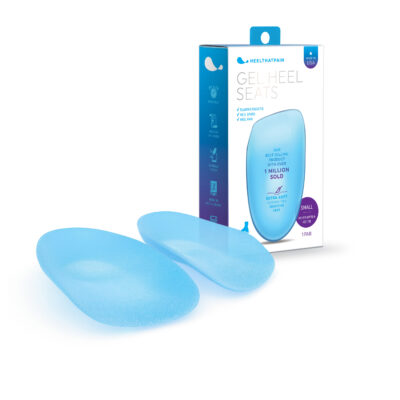It was all in good fun — and hey, I didn’t feel old! But about six months later, when I started to notice that my feet hurt more often than not, I started to worry. Was this what happened on the other side of the hill?
As I finally learned from my podiatrist, I wasn’t alone. Foot pain is extremely common in mature adults. But thankfully, I wasn’t doomed to foot pain for the rest of my days either.
Walking on Broken Glass
I’d always taken a lot of pride in staying active. When I was a younger woman, I ran half marathons. As I got older, I slowed down a little but I still regularly played tennis and hiked in the foothills near my home.
I’d had sore feet before — nothing major. But I’d never experienced anything like the “walking on shards of glass” feeling that made the first steps out of bed in the morning almost unbearable. I stopped playing tennis, stopped hiking, even stopped walking to the mailbox when I could avoid it, because my feet hurt so much.
In a panic, I made an appointment with a podiatrist.
Learning I’d Lost the Spring in My Step
At the podiatrist’s office, there was good news, and there was bad news. The bad news came first: I had literally lost the “spring” in my step. After listening to my symptoms and doing some imaging to rule out a stress fracture, the doctor explained that I had a condition known as “plantar fasciitis.”
He explained that the plantar fascia is the “springy” ligament that runs from the heel to the ball of the foot, and helps absorb impact. Those “springs” can wear out as a result of injury, overuse— or the normal aging process. My doctor explained that while athletes are the ones who make news headlines when they get plantar fasciitis, the most common risk factor for the condition is age!
And that wasn’t all:
And Bunions, Too!
It turned out that plantar fasciitis wasn’t my only problem. I also had bunions (which may have been a contributing factor in my plantar fasciitis).
I’d notice that the bump where my big toes met my foot seemed to be more pronounced than my husband’s — and I could feel it rub against my shoes while I walked. Sometimes, after a tennis match, I realized they were red and inflamed. But I didn’t know that bunions could subtly change my gait over time and strain my arch as my body tried to minimize the discomfort
Okay, How Did This Happen to Me?
My podiatrist reassured me that aging feet are simply at higher risk for different conditions that cause foot pain — including plantar fasciitis.
The doctor reassured me that while the bunions and my active lifestyle might have played a role in my plantar fasciitis diagnosis, age was likely the main contributing factor. I had no idea that the aging process flattens and widens the feet, making it harder for the plantar fascia (that spring in my step) to absorb impact, and wearing down the heel’s natural fatty cushioning.
Older adults also deal with changes in circulation (which may slow healing when we overuse or injure our feet), and changes in the strength of skin and tissue that make injuries from rubbing or pressure more common (hello, bunions!).
Finding Answers for Foot Pain
My doctor was quick to reassure me that foot pain wasn’t a life sentence. I was also relieved to learn that most people with a diagnosis of plantar fasciitis recover within a few months — without surgery.
I left the podiatrist’s office with a prescription for rest, stretching exercises for my plantar fascia, and instructions to ice my feet whenever they felt inflamed or painful. My doctor also recommended orthotic inserts that I could slip into almost any pair of shoes I already owned, to help support my injured arch and make walking much less painful.
I was given strict instructions to stop wearing shoes that rubbed against my feet while I walked, or were too tight in the toes.
Getting My Spring Back!
I’m happy to say that while I might be “over the hill,” I’m back to hiking in the hills without foot pain! It took a few months. And I’m more vigilant about giving my feet a good rest after a long hike than I was before. But it’s safe to say I have the spring back in my step.
Those orthotic inserts my podiatrist recommended were a lifesaver. In the short term, they took the pressure off my arch and relieved that “walking on broken glass” sensation. And in the long term, combined with stretching to improve my strength and flexibility, and better-fitting shoes, my arch actually was able to heal and recover.
I’ve also added the following tools into my daily and weekly routine. After learning what it’s like to be knocked off my feet, I’m doing everything I can to keep them healthy:
- Orthotic inserts: My doctor recommended fascia bar inserts because they are more effective than regular cushioning and arch support
- Compression socks: These socks help improve my blood circulation, important for older adults
- Massage ball: This little ball helps roll out painful muscle knots and scar tissue, as well as improving circulation in my feet
- Ice therapy slippers: Since I ice my feet regularly, I wanted an upgrade from the ziploc bag! These slippers stay in place, with no mess, and strap right to your feet.



